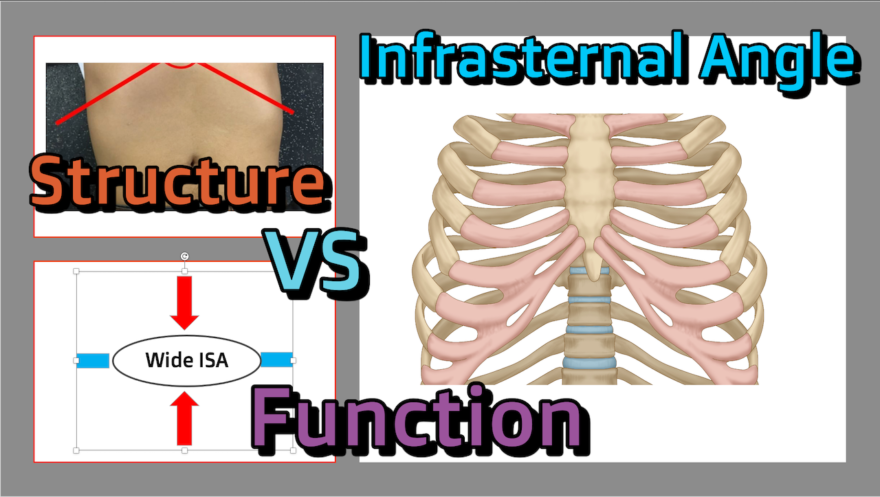The infrasternal angle (ISA) can be confusing because narrows can present with limitations in exhalation. Can you have a wide ISA and narrow infrapubic angle (IPA)?
If you’ve ever wondered these questions, check this video below to learn more:
Table of Contents
Infrasternal angle structure
The infrasternal angle (ISA) is a structural component of an invididual. Some folks are simply built with wider ribcages. Some are built with narrower ribcages, and everything in between.
So too when it comes to pelvic shape. Some folks can have wider pelvi, others, narrow.
Both of these categories can mix. You can have a wider ribcage and a narrower pelvis. These differences merely have to do with structural comparison, not dynamics.
Infrasternal angle dynamics
With these superimposed shapes, the ribcage and pelvis move in specific directions as we breathe.
These are the noncompensatory mechanics:
- Inhalation: The ISA widens, and the infrapubic angle (IPA) narrows
- Exhalation: The ISA narrows, and the IPA widens
Alas, very few exhibit “normal” mechanics. If there is a loss of dynamics, compensatory mechanics occur based on the shape of the infrasternal angles.
Shortly, the ISA and IPA will match, and you will not have this normal oscillation.
These matches are more the positioning of the angles as opposed to the physical structure. If we take someone who has a wide ISA and narrower IPA, both will have a “matched position.” Meaning, the ISA will be wide (and have difficulty closing). The IPA will be in an exhaled position, but still be narrower.

